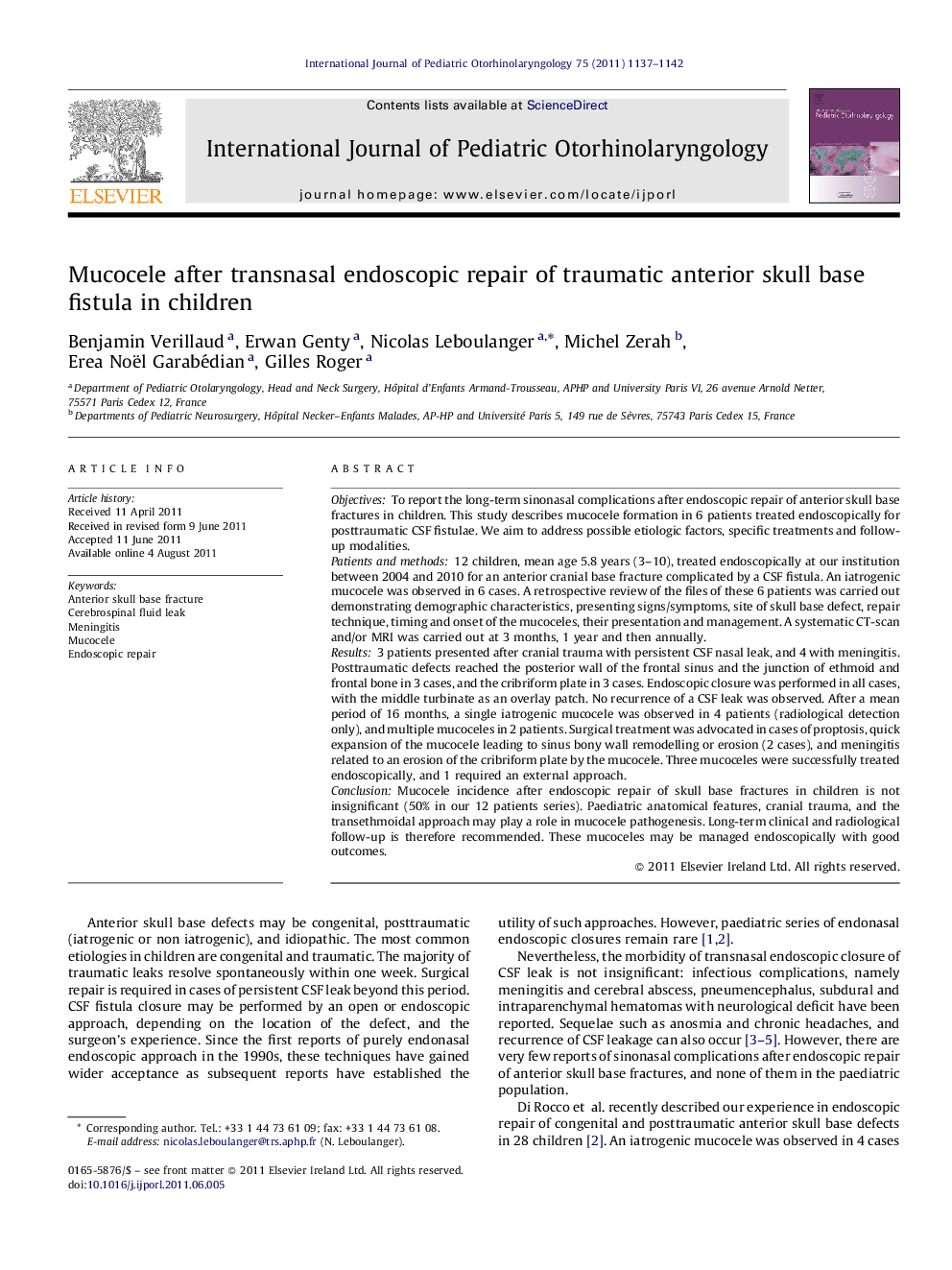| کد مقاله | کد نشریه | سال انتشار | مقاله انگلیسی | نسخه تمام متن |
|---|---|---|---|---|
| 4113582 | 1606041 | 2011 | 6 صفحه PDF | دانلود رایگان |

ObjectivesTo report the long-term sinonasal complications after endoscopic repair of anterior skull base fractures in children. This study describes mucocele formation in 6 patients treated endoscopically for posttraumatic CSF fistulae. We aim to address possible etiologic factors, specific treatments and follow-up modalities.Patients and methods12 children, mean age 5.8 years (3–10), treated endoscopically at our institution between 2004 and 2010 for an anterior cranial base fracture complicated by a CSF fistula. An iatrogenic mucocele was observed in 6 cases. A retrospective review of the files of these 6 patients was carried out demonstrating demographic characteristics, presenting signs/symptoms, site of skull base defect, repair technique, timing and onset of the mucoceles, their presentation and management. A systematic CT-scan and/or MRI was carried out at 3 months, 1 year and then annually.Results3 patients presented after cranial trauma with persistent CSF nasal leak, and 4 with meningitis. Posttraumatic defects reached the posterior wall of the frontal sinus and the junction of ethmoid and frontal bone in 3 cases, and the cribriform plate in 3 cases. Endoscopic closure was performed in all cases, with the middle turbinate as an overlay patch. No recurrence of a CSF leak was observed. After a mean period of 16 months, a single iatrogenic mucocele was observed in 4 patients (radiological detection only), and multiple mucoceles in 2 patients. Surgical treatment was advocated in cases of proptosis, quick expansion of the mucocele leading to sinus bony wall remodelling or erosion (2 cases), and meningitis related to an erosion of the cribriform plate by the mucocele. Three mucoceles were successfully treated endoscopically, and 1 required an external approach.ConclusionMucocele incidence after endoscopic repair of skull base fractures in children is not insignificant (50% in our 12 patients series). Paediatric anatomical features, cranial trauma, and the transethmoidal approach may play a role in mucocele pathogenesis. Long-term clinical and radiological follow-up is therefore recommended. These mucoceles may be managed endoscopically with good outcomes.
Journal: International Journal of Pediatric Otorhinolaryngology - Volume 75, Issue 9, September 2011, Pages 1137–1142